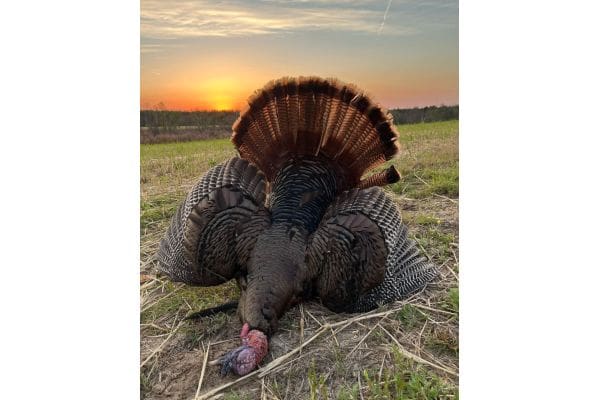Turkey Hunting Seasons Are Here!

Wild turkey hunting seasons are opening nationwide, so it’s time to brush up on turkey knowledge, get gear in order, and head to the woods! The wild turkey is a uniquely North American Species, found in six Canadian provinces and all lower 48 United States and Hawaii, where the turkey was introduced in the early 1960s. Hunting turkey helps control populations and maintain the natural caution of people, not to mention making great field-to-table meals.
Turkey makes a great start to hunting and a challenge to seasoned hunters; no animal will test stealth and patience like a wild turkey! Hunters have always played a critical role in managing the big birds; in the early 1900s, there were only 100,000 turkeys remaining compared to the estimated 7 million in the wild today. The wild turkey rebound results from wildlife conservation and habitat programs. These programs are funded by hunting licenses and taxes on firearms and ammunition. Through the work of state game agencies, conservation groups like Safari Club International (SCI), and the many hunters and conservationists who volunteered their time and sweat, wild turkeys are flourishing across the country.
For example, as the Lansing, Michigan SCI Chapter noted, “In the early 1980s, turkeys were released in Southern Michigan and adapted and reproduced so well that they established a limited turkey hunting season within ten years.” Similar reintroductions occurred across the nation, and by the early 1990s, most states had at least a limited turkey hunting season.
In California, the San Diego Chapter of SCI was, and remains, a crucial player in introducing a growing and sustainable turkey population in San Diego County. Over the years, SCI has worked closely with other hunting and conservation organizations on numerous turkey conservation initiatives and habitat programs.
Although turkeys have been a conservation success story, management plans must be constantly monitored and improved to ensure the long-term sustainability of the species. Hunting is the backbone of conservation and management of turkey by providing both general funding and targeted resources.
There are six varieties of wild turkey; five are subspecies of Meleagris gallopavo. All turkey species are also eligible for entry in the SCI Record Book.
Safari Club International encourages all hunters to get outdoors this spring, introduce a friend to the ways of turkey hunting, and enjoy the wildlife you have the freedom to hunt. Hunters are the leaders in conservation, management, and wildlife research; go out and reap the rewards!
Eastern turkey, the most widely distributed and hunted of the five, is found in the most southern reaches of southeastern and midwestern Canada and the United States from Maine down to the eastern seaboard and westward across the Florida Panhandle to Texas and up through Minnesota;
Osceola turkey are found only on the Florida peninsula;
Rio Grande turkey (M. g. intermedia) is named for the Rio Grande River along the border of Mexico and Texas and is native to that region up through Central Texas and Oklahoma, Kansas, New Mexico, Colorado and Utah. Also introduced to California, Nevada, Oregon, Washington, Hawaii and Idaho;
Merriam’s turkey (M. g. merriami) is found throughout the Rocky Mountains and the northern Great Plains in Colorado, Nebraska, Wyoming, Montana, North Dakota and South Dakota, plus the high mesas of New Mexico, Arizona and Utah;
Gould’s turkey (M. g. Mexicana) lives in Southeastern Arizona (where conservationists reintroduced them) and New Mexico, but it is most numerous in Northern Mexico in the Sierra Madre Occidentals;
And the sixth wild turkey is the only one not also found in the United States. The Ocellated turkey (Meleagris ocellate) lives only on the Yucatan Peninsula of southern Mexico, northern Guatemala and northern Belize.
For 50 years, Safari Club International (SCI) has been the leading defender of the freedom to hunt and supporter of wildlife conservation worldwide.
SCI is unique in the scope of our ability to defend and advance our freedom to hunt. SCI is the only hunting rights organization with a Washington, D.C.- based international advocacy team and an all-species focus. SCI mobilizes our 152 chapters and affiliate network representing 7.2 million hunters around the world. The conservation projects of SCI’s sister organization, the SCI Foundation, support research, management and rural communities in North America, Africa and Central Asia. In addition, SCI’s Annual Hunters’ Convention is the world’s largest marketplace that celebrates our freedom to hunt.
For more information, please visit
WWW.SAFARICLUB.ORG

